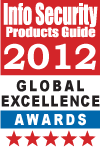In today’s mobile workforce, millions of organizations are put at risk due to faulty or unsecure remote access connections. To rectify their security concerns and overcome the complexities of managing large-scale VPN rollouts, NCP engineering has released a new version of its Secure Enterprise Management (SEM) system.
The software provides unparalleled security with the new NCP Advanced Authentication, which enables powerful Two-Factor Authentication with a One-Time Password that users receive via SMS from the NCP Advanced Authentication Connector. This eliminates the need for enterprises to use other third-party solutions, instead enabling Two-Factor Authentication with only a mobile feature phone or smartphone.
On top of this, the SEM system offers a single point of network administration to control companies’ entire IPsec and SSL VPN networks, as well as full Network Access Control (NAC) management. It also supports the broadest range of end device platforms, including Windows 8/7/Vista/XP, Windows Mobile/Phone, Android, Mac OS X, Mac iOS, BlackBerry, Symbian and Linux.
To learn more about today’s announcement, you can read the full release here.

Screenshot of the Advanced Authentication







 d it before and we’ll say it again – disgruntled, former employees pose a major risk to your network. If you’ve been following the headlines this week, you know why we’re bringing this up again.
d it before and we’ll say it again – disgruntled, former employees pose a major risk to your network. If you’ve been following the headlines this week, you know why we’re bringing this up again.